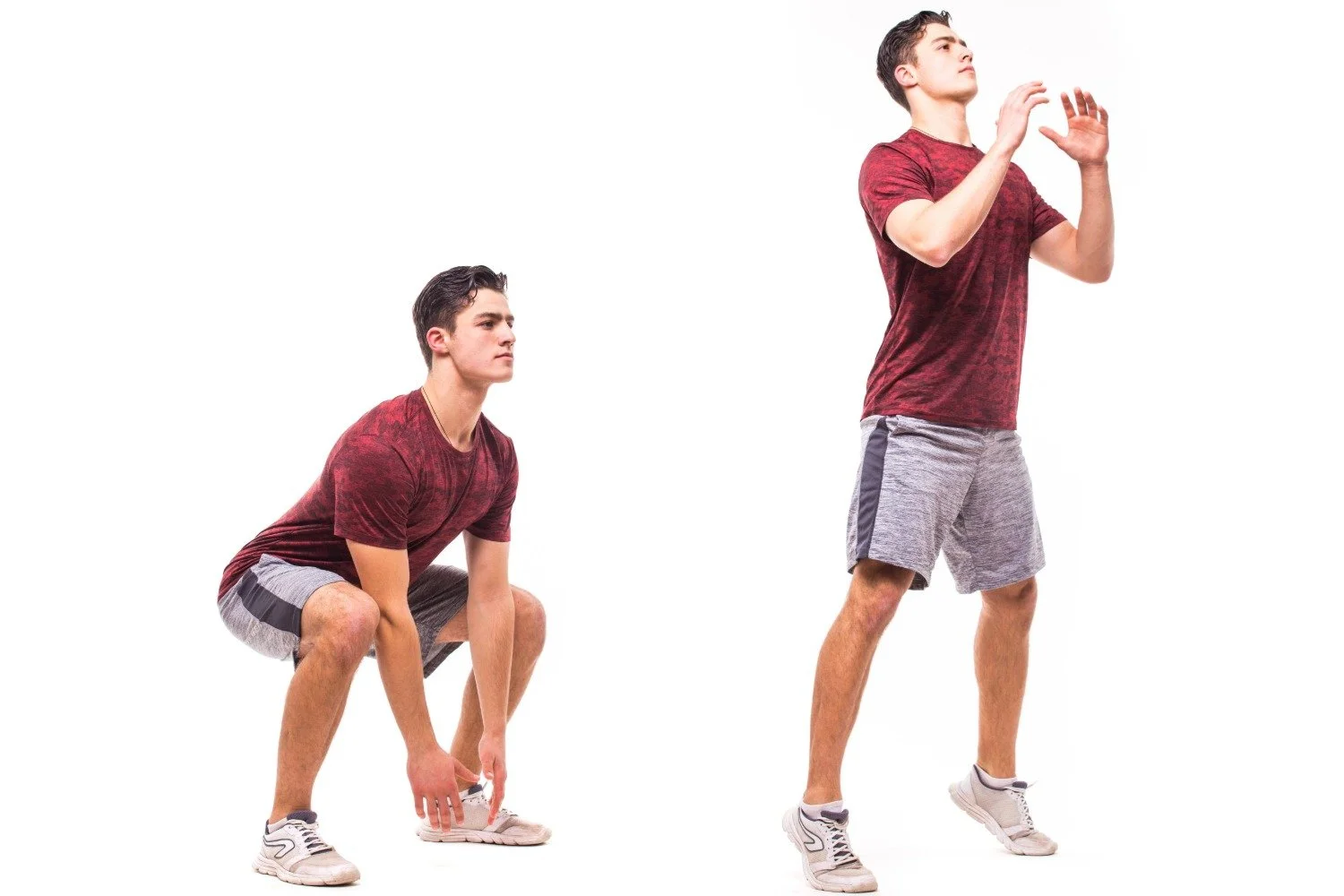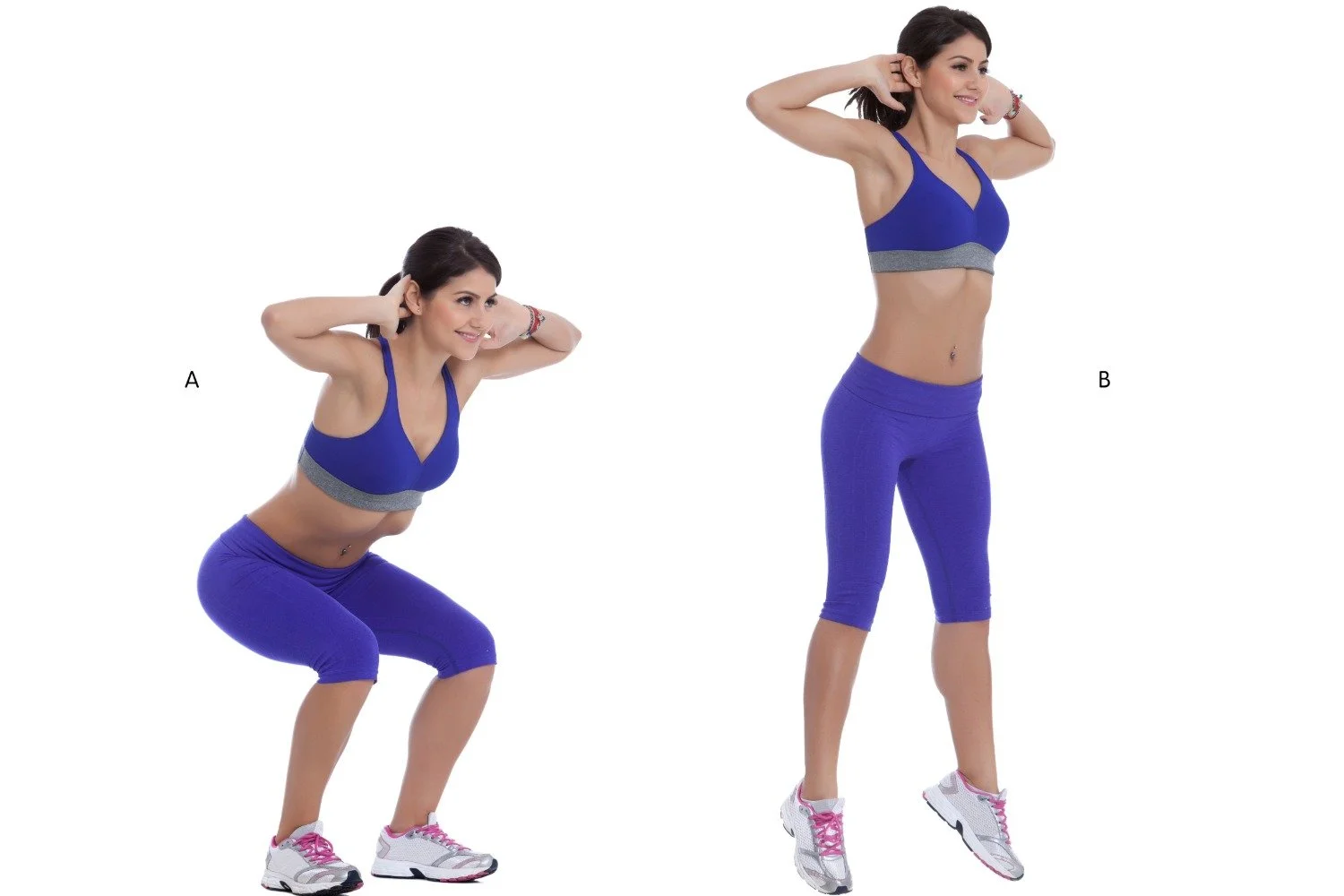The Squat Jump: Explosive Power Built From the Ground Up
Plyometric squat jump technique, benefits, and progressions—turn strong squats into explosive athletic power.
Want fast answers? Read the Squat Jump FAQ at the bottom of this page.
If you've already dialed in your squat technique, you're ready to take your lower-body training to the next level. The squat jump transforms the strength and stability of a squat into explosive athletic power, helping you move faster, jump higher, and react more efficiently in sport and daily life.
This drill builds directly on the movement patterns learned in a standard squat, making it a natural next step for anyone who wants to turn raw strength into real-world performance.
A quick, perfect-form demonstration of the squat jump
What Is a Squat Jump?
The squat jump is a plyometric exercise that starts from a squat and finishes with an explosive vertical jump. It develops power, speed, and muscular coordination, making it a staple for athletes and anyone looking to improve dynamic movement.
Starting Position
Feet shoulder-width apart, toes slightly out
Chest tall, core braced
Shoulders back, weight through heels & mid-foot
Lower Into the Squat
Hips back, knees bent
Thighs roughly parallel
Knees track over toes
Explode Upward
Drive through the floor
Extend hips, knees, and ankles in sync
Swing arms upward to assist lift
Land Softly
Land quietly on balls of feet, then heels
Absorb impact by bending knees and hips
Return to squat position with control
Repeat With Control
Power over quantity — each rep should be sharp and purposeful.Form Tips
A — Starting squat stance with knees bent, hips back, and core braced.
B — Explosive jump phase demonstrating power and proper landing mechanics.
Form Tips
Brace your core before each jump
Keep knees aligned over toes
Land quietly to show good shock absorption
Maintain posture — chest up, spine neutral
Use your arms for balance & power
| Benefit | Why It Matters |
|---|---|
| 🔥 Explosive power | Improves jumping, sprinting, and acceleration. |
| 💪 Lower-body strength | Targets glutes, quads, hamstrings, and calves. |
| ⚡ Athletic performance | Builds speed, reactivity, and power transfer. |
| ❤️ Conditioning | High-intensity stimulus that raises heart rate. |
| 🧠 Coordination | Enhances timing, balance, and force control. |
On smaller screens, swipe or scroll horizontally to view the full table.
How This Exercise Fits Into Your Training
The squat jump builds on what you've already learned from mastering the squat. While the squat develops strength and control, the squat jump adds speed, power, and reactivity, turning a foundational movement into an athletic performance tool.
It's the natural “next step” once the basics are locked in.
Next Steps & Related Learning
If you haven't already, make sure you understand and practice the fundamentals first — your power is only as strong as your foundation.
👉 Start here: The Squat — Technique, Muscles Worked & Training Guide
FAQ
Q1: What muscles does the squat jump work?
A squat jump targets the glutes, quads, hamstrings, calves, and core, building lower-body strength and explosive power.
Q2: How do you perform a squat jump correctly?
Start in a squat stance, lower with control, then explode upward by driving through your legs. Land softly, absorb the impact, and reset before repeating.
Q3: Are squat jumps good for beginners?
Yes — but beginners should first master proper squat form. Start with bodyweight squats, then add small jumps before progressing to full squat jumps.
Q4: What are the benefits of squat jumps?
Squat jumps improve power, speed, jump height, coordination, leg strength, and cardiovascular fitness.
Q5: How many squat jumps should I do?
Start with 2–3 sets of 5–8 controlled reps, focusing on quality and soft landings. Increase reps gradually as strength and form improve.


